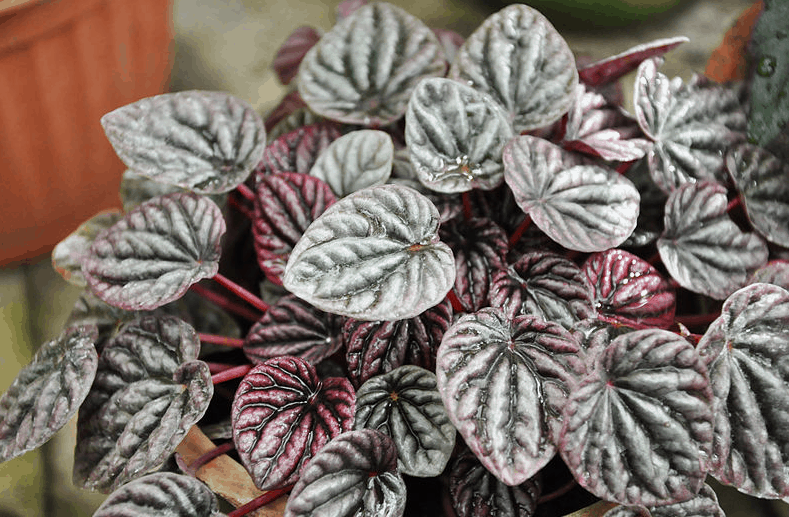- How to Propagate Monstera Guide: The Three Ways to Succeed - September 17, 2021
- Escargot Begonia: Why Is The Rex Begonia So Rare? - August 31, 2021
- Rieger Begonia: When You Can Expect The Hiemalis Begonia To Flourish - August 31, 2021
If ever there was a variety of Peperomia that showcased its close familial ties to the pepper family (Piperaceae), the Peperomia Rosso also known as Emerald Ripple Pepper is it. This is a stunning plant with an easygoing nature that is sure to become a favorite for window sill gardens.
This stunning plant is actually a hybrid of Peperomia Marmorata and Peperomia Metallica. Its unusual look features male and female flowers on the same spike. Because of this, when it blooms, it is somehow even more stunning than usual.
How to Identify Emerald Ripple Pepper
With its unique features, Emerald Ripple Pepper is very easy to identify. If you’re interested in getting one of these plants for your garden or home, look for these key features:
- Leaves that are oval or oblong shaped
- Leaves that are green and shiny on their tops and red on their bottoms
- Leaves that grow in a tight cluster formation
- Leaves that are corrugated and contain veins
- Spikes that grow up to 3 inches long and produce tiny greenish-white flowers
How to Grow Emerald Ripple Pepper from Seeds
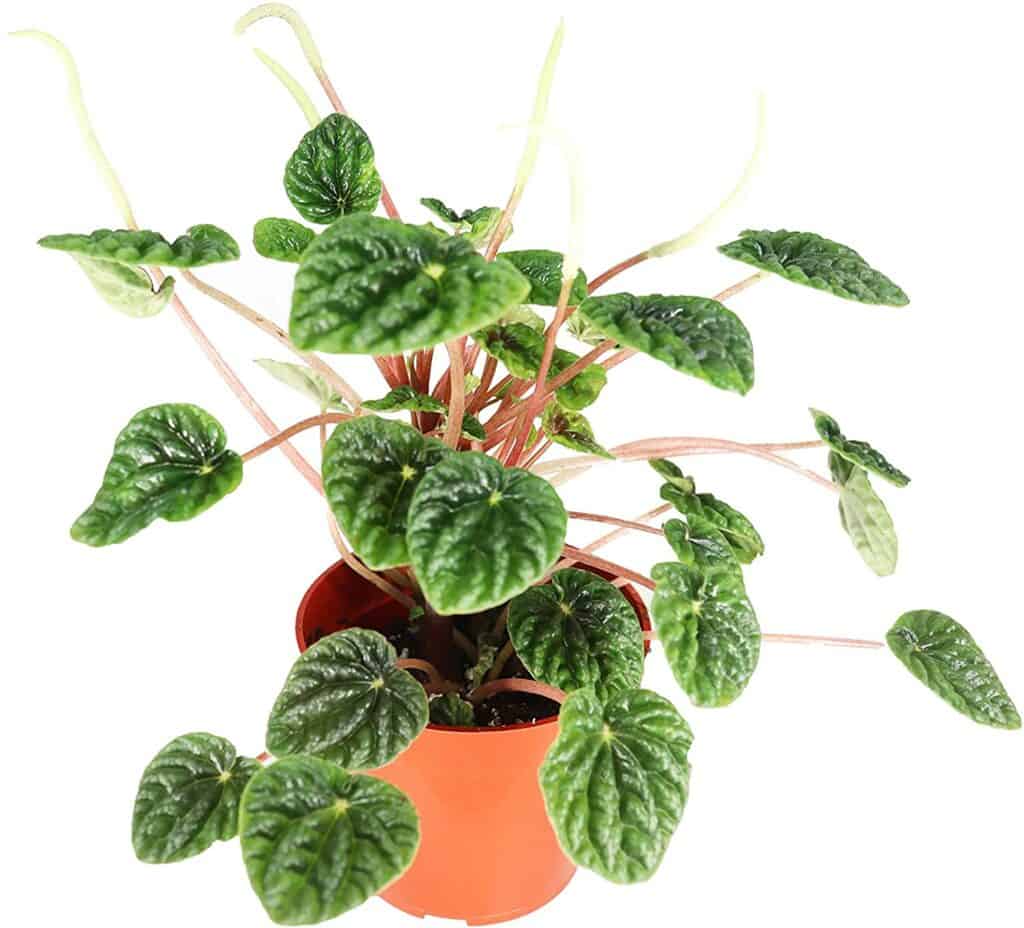
It is a slow process to grow an Emerald Ripple Pepper plant from seed. If you are determined to grow one of these via seeds, plan to spend plenty of time waiting for signs of significant growth. Here are the steps for planting and growing one of these plants from seed:
- Purchase seeds from a reputable seller (sellers who price their seeds between $1 and $2)
- Fill a container with a soilless seed starting mix
- Plant the seeds in the seed starting mix
- Water the mix so that it is moist but not soggy
- Place plastic wrap over the top of the container
- Set the container in a warm spot that gets plenty of bright, indirect sunlight
- Once sprouts appear, transplant the seeds to a permanent container
How to Propagate Emerald Ripple Pepper
The two most common propagation methods for this plant are simple and straightforward. Plan to work through either of these methods during spring pruning sessions or when you repot your plants in the early spring season. The warmer the weather, the less risky it is for a plant to go into shock when you prune or replant it. Here are the basic steps to work through both propagation methods:
The Leaf Cutting Method
- Clean a pair of scissors or another type of cutting utensil
- Cut off a healthy leaf that includes a petiole
- Fill a plant container with well-draining soil that includes 50% peat and 50% perlite
- Dip the end of the leaf in a rooting hormone
- Stick the leaf into the soil
- Cover the plant and its container with clear plastic to keep in humidity
- Set the plant container in an area that is warm and receives plenty of indirect or filtered sunlight
- Water the new plant when the top layer of its soil is dry and recover it with the plastic
- Once the plant has grown roots (approximately one month’s time), it can be treated as a mature plant
The Stem Cutting Method
- Clean a pair of scissors or another type of cutting utensil
- Cut off a healthy and long stem that includes a petiole and several leaves
- Remove the lowest leaves
- Fill a plant container with well-draining soil that includes 50% peat and 50% perlite
- Stick the stem into the soil
- Cover the plant and its container with clear plastic to keep in humidity
- Set the plant container in an area that is warm and receives plenty of indirect or filtered sunlight
- Water the new plant when the top layer of its soil is dry and recover it with the plastic
- Once the plant has grown roots (approximately one month’s time), it can be treated as a mature plant
Emerald Ripple Pepper Growing Conditions
This Peperomia variety does enjoy warm temperatures, but it can handle less humidity than other members of its family. The best climate for this plant includes temperatures ranging between 55 and 75 degrees Fahrenheit with average home humidity levels.
If you feel that your plant needs more humidity, you can either mist it with a water bottle every few days or provide it with a Pebble tray or a Plant humidifier.
To supplement high temperatures, set the plant next to a heat source such as a radiator or provide it with a Plant Heat Mat.
How to Plant Emerald Ripple Pepper
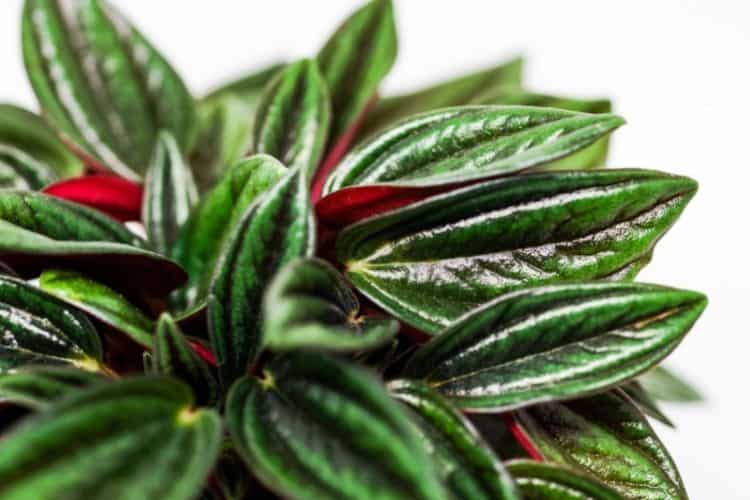
This Peperomia variety actually grows rather fast, but it still doesn’t mind being tight and cozy in its plant container. Watch your plant for signs that it needs to be repotted, but plan to repot it on average every two to three years.
Remember, repotting should only be done in spring or summer to reduce the risk of shock in the plant. This is also an opportunity to provide the plant with new soil and extra nutrients, as well as assist in keeping the plant container clean from pest infestations and diseases.
Keep an eye out for the following signs to know whether or not your plant needs repotted before two to three years has passed:
- Compacted Soil
- Roots that are crowded and growing into a ball formation
- Roots that are growing out of the plant container drainage hole
- A plant that looks too big for its current container
When it comes time to repot your Emerald Ripple Pepper, follow these steps:
- Fill a container with potting soil (if the plant has outgrown its current container, choose a new container that is two inches larger in diameter)
- Create a hole in the soil for the plant to set inside
- Carefully remove the plant from its current container
- Gently dust off any excess soil from its roots
- Set the plant into the hole in the new container
- Spread the soil around so that the plant is secure in its new container
- water the plant
- Set it in a warm spot with indirect sunlight
Emerald Ripple Pepper Potting & Soil
Proper potting soil and a proper plant container should be capable of draining off excess water. Peperomia plants that do not have soil and containers that drain well are at a higher risk of getting root rot, pest infestations, and other diseases.
Try these recommended products for your Peperomia plants:
- The Succulent Cult’s Organic Succulent & Cactus Soil Mix
- Succulent Pots 4 Pack
Emerald Ripple Pepper Water Requirements
Peperomia plants of all varieties should be watered in the soak and dry method to ensure that the water does not get on top of the leaves and cause them to rot. This method also allows the plants to get enough water but not too much. It is a very simple method with six steps:
- Test the plant’s soil before watering it. It should only be watered if the top two inches are dry. If those top two inches are still moist, wait another day to water it.
- Fill a tray or a tub with water.
- Set the plant container in the water, but make sure the water isn’t so deep that it will overflow the lip of the container. The point of the soak and dry method is to use the drainage holes in the plant container to soak up water from the bottom.
- Let the plant soak up water for fifteen minutes.
- Remove the plant from the water.
- Set the plant in a spot where the excess water can drain from the container’s drainage holes.
Don’t let watering your plants worry you. Use the plant watering app to reduce or eliminate your plant watering worries. They are extremely easy to use and useful to track when you watered your plants, remind you to water your plants, and answer questions about your plants. Gardening just got a lot easier.
Emerald Ripple Pepper Light Requirements
Reduce or eliminate your worries about proper plant lighting by using either a light meter or a light meter app . These technologies will ensure that your plant is getting the exact amount of light that it needs.
Fortunately, Peperomia varieties are very simple when it comes to caring for their sunlight needs. Place them in a spot that receives plenty of bright sunlight that is either filtered by a shade or is indirect, and they will flourish. This type of sunlight provides them with the light they require to grow strong and healthy, but it will not burn or dry out their delicate leaves.
Best Emerald Ripple Pepper Fertilizer
Emerald Ripple Pepper requires a slightly different feeding schedule than other Peperomia varieties. This variety should be fed a dose of fertilizer that is diluted to half strength twice a month during spring and summer. During autumn and winter, it should be fed a dose of fertilizer that is diluted to half strength only once a month.
Try Cute Farms Succulent Cacti & Aloe Fertilizer for this plant.
Best Emerald Ripple Pepper Companion Plantings
Most Peperomia varieties benefit from plant clustering because they love high humidity. While Emerald Ripple Pepper does enjoy some humidity, it does not require it to the extent that it needs extra equipment or companion plantings for good health.
This does not negate the fact that this type of plant looks amazing next to other plants, and since it is so easy to care for, it will not be a problem to have it alongside another plant.
When considering what types of plants to use as a companion planting for your Emerald Ripple Pepper, keep the following requirements in mind:
- Choose a plant that has similar care requirements, eg, the same type of soil and watering method
- Choose a plant that will look aesthetically appealing next to your other plant
- Choose a plant that is easy to grow, propagate, and care for
A few examples of plants that will meet these plant companion requirements are:
Pothos Plants
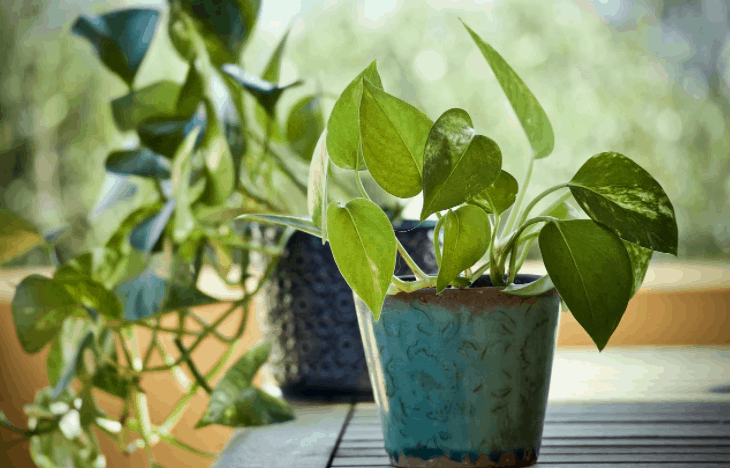
Pros
- They are very easy to care for
- they require well-draining soil
- They require the soak and dry watering method
- They come in a wide variety of leaf shapes and color variegations
Cons
- they are toxic
Pilea Plants
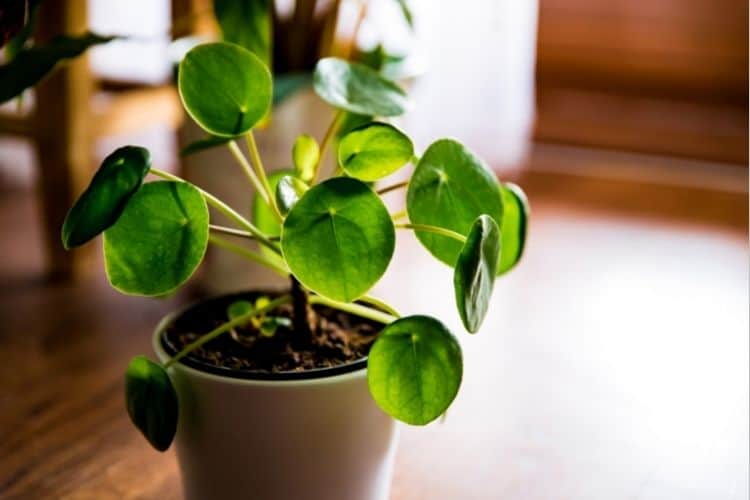
Pros
- They are very easy to care for
- they require well-draining soil
- They require the soak and dry watering method
- They come in different shapes , sizes, leaf textures, and colors
- they are not toxic
Cons
- None
Peperomy Plants
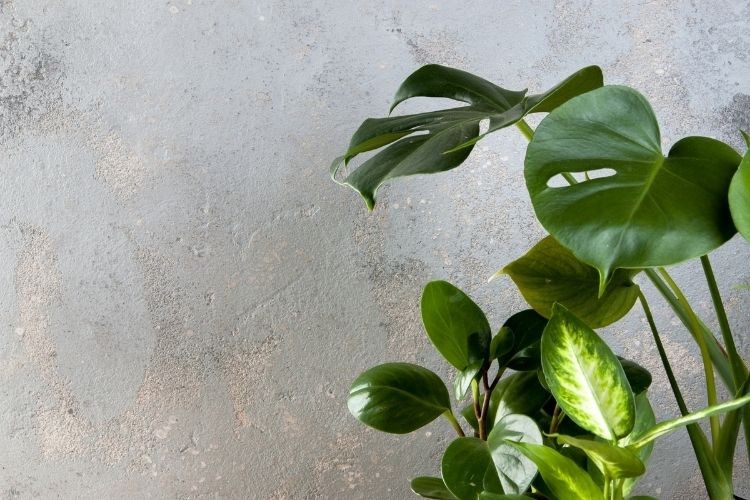
Pros
- They are from the same family as Emerald Ripple Pepper
- They are typically very easygoing and unfussy
- They come in a wide variety of shapes and colors
- they are not toxic
Cons
- None
Emerald Ripple Pepper Diseases and Common Problems
Here is a list of the most common issues faced by these plants. In this list is information on how to identify and treat each issue.
Mealybugs
Evidence of an infestation of mealybugs is small white spots that look like cotton on leaves and stems. To deal with an infestation of mealybugs, follow these steps:
- Spray a solution of alcohol and water on the leaves
- Rub the leaves with a cotton ball
- Coat the leaves in neem oil or insecticidal soap every few days
Root Rot
This is caused by overwatering a plant. If you learn how to properly water your plants, they should not get root rot. If, however, you are suspicious that your plant is suffering from this, look for these symptoms:
- Stems and leaves that are black
- Stems and leaves that are translucent
- Stems and leaves that are mushy
- Leaves that are dropping off regularly
A plant that is suffering from root rot should be allowed to dry out for a few days or weeks. There’s no need to water the plant during this time. From the trim off leaves and stems that are black, translucent, and mushy. If drying out the plant does not work, it may be best to replace the plant’s soil altogether.
Spider Mites
Evidence of a spider mite infestation will show up as webbing on the leaves and stems. Sometimes the tiny insects will even be visible crawling around the plant. To treat this type of infestation, fill a spray bottle with a quart of warm water, 1 tsp. of dish soap, and 2 tsp. Of neem oil. Use this mixture to spray and wipe the leaves and stems of the plant clean. It may be necessary to repeat this process several times to rid the plant of all the insects.
Emerald Ripple Pepper Treatments and Maintenance
If you want healthy plants, learn what their care requirements are and learn a few maintenance techniques to keep them in optimal health. Remember, prevention is better than treatment. Here are a few tips to help keep any of your plants healthy and free of diseases:
- Check it for signs of disease and infestations regularly, and treat them quickly.
- Clean the plant regularly with neem oil.
- Learn how to properly water and feed your plant.
- Make sure your plant is set in an area with adequate amounts of sunlight, heat, and humidity.
- Mix diatomaceous earth into the soil of potted plants.
Where to Buy Emerald Ripple Pepper Seeds Online
Since seeds for Peperomia plants are difficult to come by, take some precautions before purchasing seeds online. Confirm that the seller is reputable and is selling a correctly labeled product before you give them your money. If you would like to buy seeds to grow your own Emerald Ripple Pepper , start with these online shops:
Where to Buy Mature Emerald Ripple Pepper Online
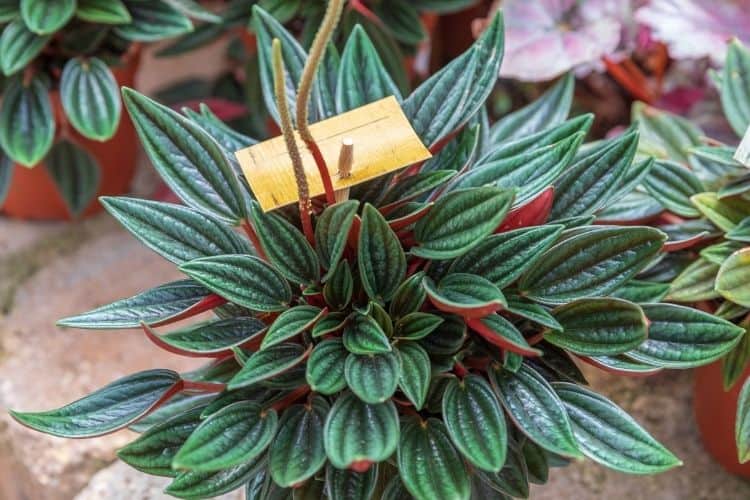
This stunning plant is available for purchase at these online shops:
FAQs
Question: Which USDA Hardiness Zone Can Emerald Ripple Pepper be Planted In?
Answer: This plant should only be set in a ground plot in zones 10a to 11b. If you live in a zone with a lower number, you will need to transfer this plant indoors during the winter.
Question: How Large Can Emerald Ripple Pepper Grow?
Answer: This plant will only grow up to 8 inches tall. Its leaves will grow up to 1 ½ inches long, and its flowering spikes will grow up to 3 inches long.
Question: Can Emerald Ripple Pepper Grow Under Artificial Lighting?
Answer: Yes, this plant will grow just fine with grow lights.
In Conclusion
Emerald Ripple Pepper is another lovely Peperomia variety that has it all. It has good looks, easygoing care requirements, and plenty of extra personalities. You’re going to love growing and decorating with this plant.

